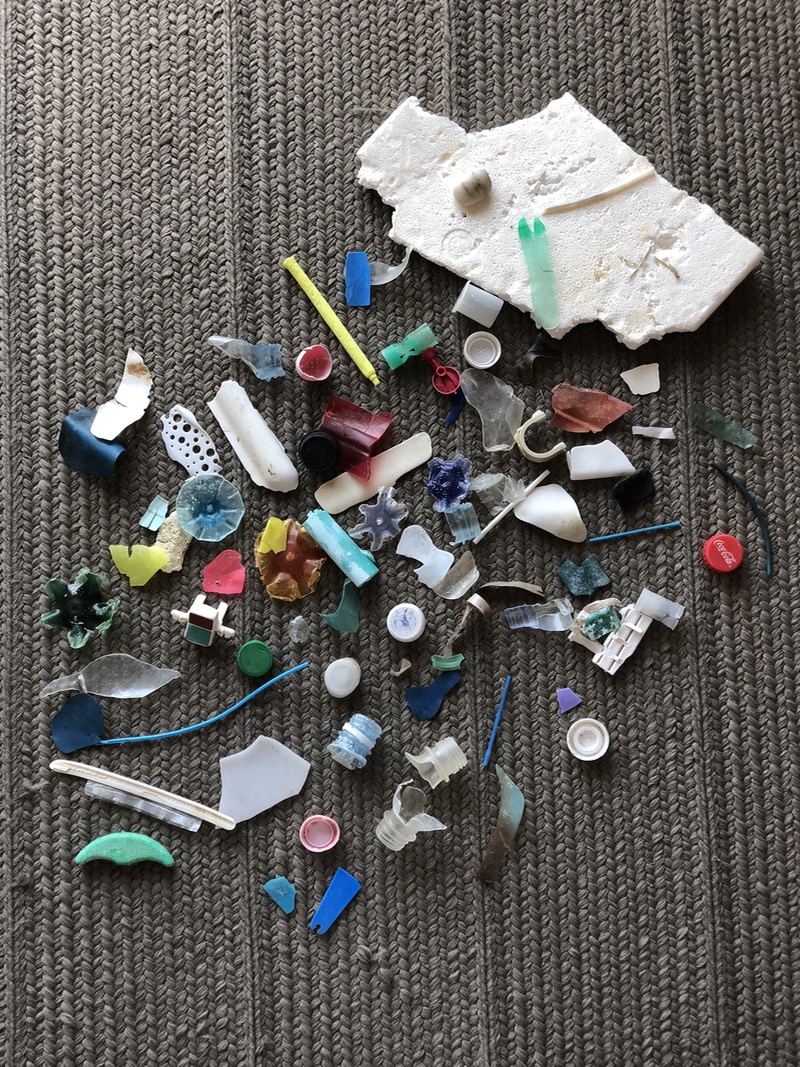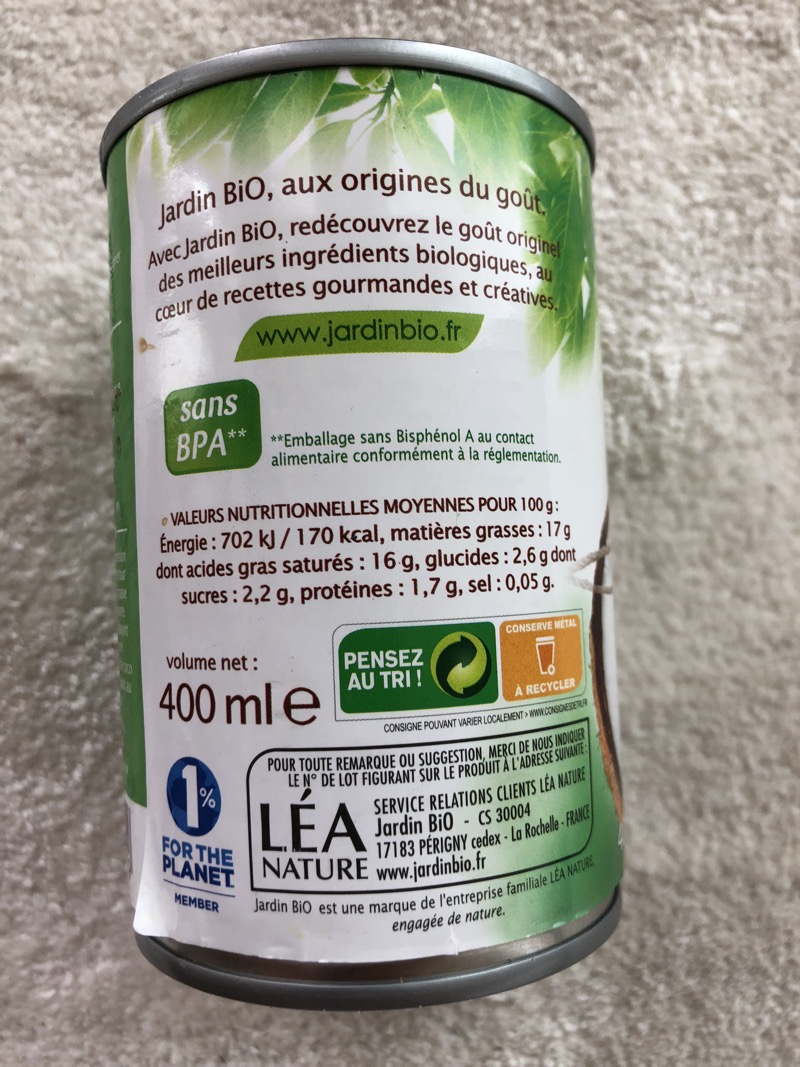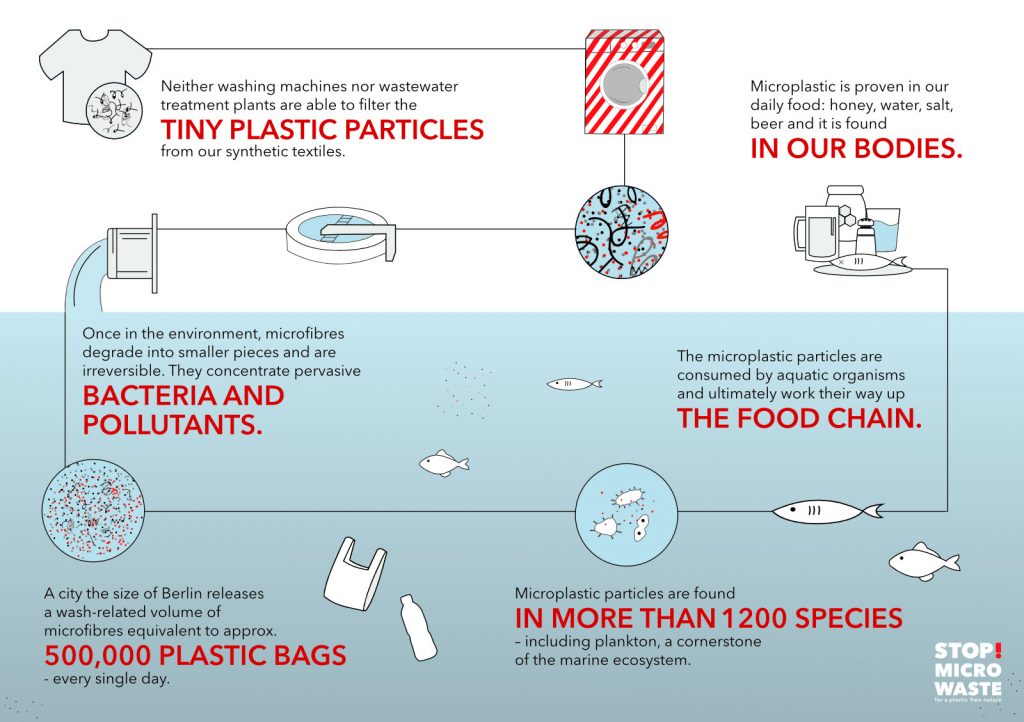The Great Flood of global plastic waste and the implications for your health
For pure convenience, low cost and out of mindless habit we act contrary to our common and individual wellbeing. Plastic waste is a looming disaster that can eventually poison life on the Planet Earth. Ignorance can harm seriously. Your awareness is the first step to single-use plastic-free lifestyle that makes you feel better. Say the bartender ahead that you do not want a straw in your cocktail, juice or smoothie. Refuse a plastic bag or container in stores. Bravo! Supporting the cause with most recent research, here are easy tools to reduce these hazards potentially sabotaging your health and the survival of much of the terrestrial life.
#BeatPlasticPollution was the theme of the World Environment Day 2018 casting attention to the pressing problem. As toxic plastic materials threaten healthy life on our planet, we must act today before it is too late. The recently emerged research reveals that this might be a five to midnight call.
Sources of plastic pollution and health hazards
Plastic waste has accumulated since the chem and tech decades post World War I, but from the booming 1960s single-use plastic materials entered the ubiquity of our daily lives. Businesses and governments encouraged by nascent science, in some cases drugged by the global profit game, blindly marketed improvement, even progress through disposable light-weight, new synthetic materials and additives that were never before part of nature in such a complex form. Mass production of plastics circumnavigated reflection prior to their release into the environment leading to a tsunami threatening consumers’ wellbeing with cheap goods. Having more ultimately leads to an excess flipping the balance of a burdensome surplus.
Luxury redefined. Our real needs are health, clean environment and survival. Let’s not get distracted then. Directly, the air we breathe, the water we drink, wash with and that houses the fish and seafood we eat, the land we grow food in, even the packaging of processed food, this all is polluted with hyper slowly degrading plastics. Their effects science only with a snail caution is beginning to reveal.


Red flag was raised after a number of most recent studies demonstrated the high residue of plastics in beer and drinking bottled water. In the US Dr. Sherri Mason tested more than 250 bottles from global brands finding plastic debris in 93 per cent of the samples. In Germany Schymanski et al. discovered that “more PEST particles have been found in water from returnable bottles” (either plastic and glass although their samples were locally collected and limited) that “are under more ‘stress’ due to their reutilization. Therefore, microparticles can be a cause of increased abrasion from the packaging material.” This means that we should shun any bottled water whatsoever (sparkling showed higher contamination than still) if we do not want to ingest microplastics and further circulate them in the environment. Global analysis of water samples is constantly updated online.
Filtered tap water seems best (if the filtering system is reliable and sufficiently captures also nanoparticles). The question remains whether cooking in unfiltered water, washing fruits, vegetables and other foods with it, can accumulate microplastics in the body and bind toxins like pesticides? New analytic tools and research is needed.
Animals’ survival is also adamant for our world. Mechanical harm of pieces that enter the intestines compromise the animal to eat less, this lowers reproduction or leads to starving, further micro and nanoplastics that bind toxic substances causing liver failure.

The entire food chain is tainted. First world legislature is catching up. For example the EU approved significant measures to combat plastic waste. The EU reports that “only 5% of the value of plastic packaging material retains in the economy, the rest is lost after a very short first-use. The annual bill accounts for between €70 and €105 billion. Europe cannot afford this.” Waste and with it generated loss are not in the interest of any country. “Most plastic in Europe is landfilled or incinerated, rather than recycled. Even when consumers make the effort, much of the packaging consumed cannot or is difficult to recycle – such as dark food containers that are not picked up in sorting scans or plastic lined paper coffee cups.”
Norway manages to recycle up to 97% of plastic bottles since convenient collecting machines reward its donors with refund money. They are located in the majority of its supermarkets. In the UK the ‘Reverse vending machines’ are being installed. BBC reported in March 2018 that “there are 40 countries and 21 US states with some kind of deposit return scheme currently in operation.” Scotland is ahead of Britain in adopting for zero value plastic bottles that in the 1960s displaced a similar scheme for glass containers across most of Europe. The money-back scheme motivates collection and return to the suitable recycling places.
Cultural attitudes strongly influence the cause. In Japan, foreigners are shocked how much plastic wrapping is overused. On highways, airplanes and trains travellers face challenges when purchasing snacks and safe foods for consumption. The best for your health is to avoid buying these snacks and seek fresh foods for immediate consumption.


Chemistry in action
Toxic ADDITIVES to plastics such as bisphenol A (BPA), phthalates, formaldehyde are suspected endocrine disruptors that can cause serious health and reproductive issues. Cigarette filters that make almost a third of street and beach waste frequently enter the waterways and landfills. The British Medical Journal alerts: “Cigarette butts contain all the carcinogenic chemicals, pesticides, and nicotine that make tobacco use the leading cause of preventable death worldwide, yet they are commonly, unconsciously and inexcusably dumped by the trillions (5.6 trillions and counting) into the global environment each year.”
Additionally, chemical pollutants absorb into the plastic from seawater. BINDING “potentially harmful plastic fragments – which can also serve as magnets for other pollutants, including dioxins, metals and pesticides – are getting into our bodies in increasing quantities. And the route of migration into foodstuffs from direct contact with plastics is no longer the only one that is furrowing scientific brows. We now have to worry about microplastics”; warns Erik Solheim, Head of UN Environment.
According to it’s size plastic can be classified as:
macroplastic > 25 mm
mesoplastic ≤ 25 mm and > 5 mm
microplastic ≤ 5 mm
nanoplastic ≤ 1mm
The last two tiny particles are the most worrying for we do not know where they can penetrate under diverse circustances in the uncontrolled environment of the laboratory. Solheim, further alerts: “For a long time, we operated on the principle that plastics are okay because there was no evidence that they are unsafe. This is not equivalent to proving they are safe. The ubiquity of plastics, and the increasing evidence that we are ingesting many of them in microplastic form, demands a closer examination of the health implications.” Microplastics and the invisible, potentially vicious nanoplastic particles must be detected because of the potential harm on human health. Hussain et al., 2001 observed “It is expected that smaller particles could possibly be better absorbed by the digestive system than larger ones.” This can lead to an increased accumulation in animals and humans. Finding whether nanoparticles penetrate barriers like the animal skin and their intestinal wall into the meat we eat is essential. Rist and Bloch Hartmann summed the state of affairs in 2017: “To date, no established analytical methods exist for the detection of nanoplastics in the aquatic environment, and no studies have demonstrated their presence. However, laboratory studies have shown the formation of nanoplastics down to sizes of 30 nm during artificial weathering of larger plastic materials, using nanoparticle tracking analysis. This is a strong indication that this process can also take place in the environment.”


There are two highways to contamination:
Primary microplastic already existed in this form by entering the environment.
Secondary microplastic has been degraded by decay of plastic.
Most of this unnecessary use and disposal of plastic material of any type is unconscious. We are unaware of how much plastic we use. Next time look at your grocery store or supermarket, notice how big proportion of the items is packed in plastic. In pharmacies, beauty stores, not just packaging but the products themselves may degrade into microplastics in the environment. Microbeads in cosmetics (check for safe products according to country here), health products (disposable contact lenses) and toothpastes are washed down the sink as well.
Microfibres in textiles: Each time we wash clothes made from synthetic fibres like polyester, nylon, or acrylics, hundreds of thousands microparticles leak into the water. One solution is to buy clothes from organic cotton, flax, hemp, cashmere, and other additive-free natural materials or use washing bags such as Guppyfriend for all of your clothes. STOP! MICRO WASTE is a nonprofit initiative from Berlin dedicated to inform the public about smart use of plastic.
What happens with unrecyclable materials?
- They are burnt, but polluting emissions escape to the air during this process
- end up in landfills as trash where they contaminate the soil, underground water and air
- wash up on our beaches, float on the water surface or decompose the depths of oceans (together with recyclable)
Some previously unrecyclable plastics found their use as ‘plastic to fuel’ in Amsterdam, where Bin2Barrel facility will soon use these to create fuel for diesel powered commercial cargo ships that “will emit 80 per cent less CO2 and provides an alternative to bio-fuels, which require large amounts of land and resources to produce”, the UN reported. While this is not zero emissions, and the fuel can accidentally leak into the ocean, such technology significantly improves the dire situation, and the founders are aware of it. Their next step is “the implementation of chemical recycling, in order to enable the creation of new plastics” from plastic waste, so it can form entirely new products.


Innovation pushes the boundaries of new biodegradable, non-toxic materials
New materials can replace plastics in eyewear, where fibreglass is swapped for Solidwool, a bio combo of sheep’s wool with resin. Algae can make lightweight water bottles. Replacing polystyrene with “mycofoam” for transport as a Ted Talk by Eben Bayer sensationally demostarted. Sustainably-minded apparel brands such as Adidas, Rothys (shoes in the photo bellow) and Patagonia use recycled plastic bottles to make new fibres for some of their special lines. This contributes to the plastic circular economy.
Upcycling or re-using older materials to create new designs like prayer carpets for trendy Hamimi bags in Marrakech, de-commissioned military stock like nylon parachute canopies for limited edition outerwear by Christopher Raeburn in the UK or surplus or retired sails for sturdy bags and storage like Mafia Bags and Susan Hoff’s design (photo bellow) in San Francisco.


Barriers exist. Circular economy is challenging to implement as human behaviour is susceptible to ignorance when inconvenient and occasional breaking of rules. Businesses and influential brands can take lead through innovation and collaborations. Globally-binding reducing of manufacturing of new plastics; outlawing single-use plastics (as it happened with microbeads and plastic bags in some countries) and supporting financially purely natural diverse materials (chemically unaltered such as bamboo, cornstarch, palm leaf, sugarcane, even pineapple leaves leftovers) for transport of food, packaging of cosmetics and beverages as well as easily biodegradable containers for household.
Recycling is thus solution when the circular economy is functioning almost spotlessly. Whatever the resulting product from the recycling process, it must be isolated from the environment, but that is extremely difficult since microplastics are like the harmful methane and CO2 now ubiquitous in our environment. Plastics themselves were found to emit greenhouse gases.
Capturing the majority of the plastic waste in the depth of oceans, floating or washed out on the beaches, in landfills and use or destroy it without greenhouse emissions is the ideal solution, yet it requires common global effort. The Ocean Cleanup NGO is set to the collect large plastic floating in the infamous Great Pacific Garbage Patch on September 8th. The energy neutral system relies on natural ocean currents and can be scaled up as the project goes.
As much as international climate conferences, toxic materials targeting commited action official and public discourse are urgently needed to address this hazard for the life on the Planet Earth. The Great Plastic Flood of plastic waste must be prevented. The achievable goal is to implement new technologies for a truly circular economy, when the vast majority of plastic waste is reused without trace in the environment. Single-use plastics should be avoided at all cost, if not banned, while reusing and recycling sturdy plastic such as in healthcare technology saving lives or those used to build planes.
HOW YOU CAN MAKE A DIFFERENCE?
YOU easily can make a difference by acting with an awareness. So what can you easily do to reduce your dependence on plastic?
Sign the #cleanSeas pledge as an individual and avoid the six single-use plastic objects proposed. Donate to the cleanup prohject
Don’t purchase coffee and tea capsules or portioned plastic bag tea. Avoid single-use cosmetics bottles and pouches. Choose food and beauty products sold in glass, pure paper (waxed with natural bees or other wax) or other “neutral” packaging. If you are one of these juice cleanses fans, seek delivery in glass bottles that can be returned and recycled by the provider.
Eat & drink in as much as you can. Refuse plastic straws before they are put in your cocktail or smoothie. If you must have it in your Aperol Spritz then get a metal straw as they do in Argentina for their mate. I like it bare. Choose coffee and tea to go purveyors like Samovar Tea and Plentea in San Francisco offering returnable glass bottles.
To farmers market bring reusable bag and light eco-containers for any dips, sauces, olives and other by the weight sold delicacies.
BYO small reusable spoon in your bag for treats or ice cream on the go. If you must takeaway, do so only if they offer wood or edible spoons like those made from sorghum flour, an energy efficient and resilient crop. The spoons even come in three flavours: plain, sweet and savoury! For to go bowls and cutlery made traditionally from plant leaves like the German Leaf Republic.
Ask the hotel you stay at or your favourite restaurant to offer filtered water, plus local mineral water packaged in glass or waxed paper boxes. Bring reusable bottle on train, planes and for long car drives. Warm water can be filled at most places free of charge (bring tea), plus filtered water is now offered in departure halls after the security in most advanced airports.
Eco-labelled household products for cleaning packed in paper or glass. Store anything in naturally-glazed earthenware or glass jars. Little Cherry in the UK sells party supplies derived from the leaves of the areca palm, which are left over during the production of betel nut in India.
Clothes – buy only natural materials. The fashion designer and microbiologist Anke Domaske uses milk yarn that is made from milk protein fibres, which is extracted from milk that did not meet hygiene standards. She needs only six litres of this milk to make a dress. Use eco dry-cleaners and wash all microfiber garments in special micro plastics capturing bags (dispose the waste properly).
Transport – use Mycofoam by Ecovative as an alternative to expanded polystyrene (EPS) to protect products during shipping.
Needless to add – don’t throw anything not easily compostable into nature, dispose in designated bins for the local waste pros to manage. Smokers, stop it or dispose of the butts properly. My Plastic-free Life blog offers plenty of other ideas.
Like oil spills, maritime accidents poison the oceans. Millions of HP printer cartridges are decomposing in the Atlantic after a storm sunk their transport boat. Alarmingly, vastly more of the pollution leaks due to our unawareness, overt reliance on single-use plastic and improper recycling. Plastic waste is like a plague, viciously crawling and slowly taking lives before an outbreak of devastating epidemic. It is like the nuclear waste, dormant in our environment. Now you know, so what will you do?





















